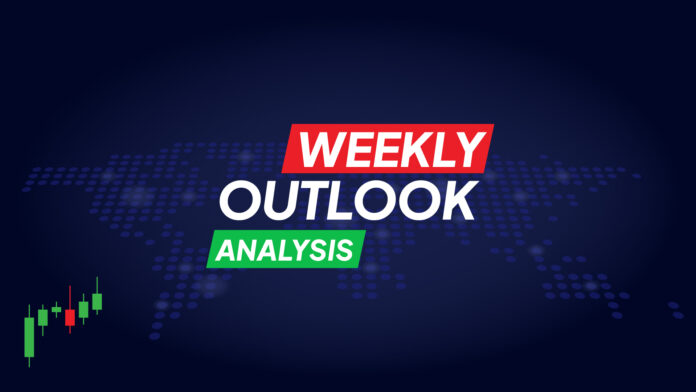Key Points To Watch Out For:
- Markets begin to stabilize after Trump’s return to the White House.
- U.S. CPI data is central to Fed rate cut expectations.
- UK and Japan GDP data are also pivotal this week.
- Volatility remains high as markets digest the potential long-term impact of “Trump 2.0.”
U.S. CPI in Focus Amid Rate Cut Bets Post-Trump Win
Donald Trump’s return to the White House has been met with market euphoria. Wall Street and Bitcoin hit historic highs, while the U.S. dollar surged to a four-month high, propelled by rising Treasury yields.
Treasury yields, which had already been climbing since September, rose further as markets adjusted their expectations for Federal Reserve rate cuts over the next two to three years. Trump’s campaign promises of tax cuts and tariff increases are expected to spur domestic demand and raise import costs, fueling inflationary pressures. Consequently, the Federal Reserve might face challenges in maintaining its current tight monetary policy stance.
The October Consumer Price Index (CPI), due Wednesday, November 13, is a critical post-election data point. In September, headline CPI eased to 2.4% year-over-year (y-o-y), but analysts predict it will climb to 2.5% y-o-y for October. Core CPI is also projected to rise from 3.3% to 3.4%. Month-on-month CPI is forecast to remain unchanged at 0.2%.
Other key data releases include Producer Prices (Thursday, November 14) and Retail Sales, the Empire State Manufacturing Index, and Industrial Production (Friday, November 15).
A CPI miss could trigger corrections in the dollar and yields, but continued inflation surprises could sustain the greenback’s rally, creating headwinds for Wall Street as higher yields weigh on equities.
Can UK Data Halt the Pound’s Decline?
U.S. Treasury yields aren’t the only ones on the rise. UK 10-year gilt yields have jumped over 20 basis points following the Labour government’s expansive tax-and-spending budget revealed on October 30. With planned tax hikes of up to £40 billion, increased government borrowing seems inevitable, potentially spurring short-term GDP growth.
The Bank of England has accounted for these fiscal measures in its economic outlook and emphasized cautiousness in its rate-cutting strategy. Wage growth, while declining, remains a concern.
Key UK Data To Watch Include:
- Tuesday, November 12: Average weekly earnings and employment trends for the three months ending September.
- Friday, November 15: The preliminary third-quarter GDP estimate. Analysts predict a 0.2% quarter-on-quarter (q-o-q) growth, slowing from 0.5% in the prior quarter.
Stronger-than-expected GDP could bolster hopes for faster rate cuts, offering some relief to the pound. Conversely, weaker data could push sterling below $1.29.
Euro Likely to Stay on the Sidelines
The euro remains under pressure due to subdued Eurozone growth prospects. However, stronger-than-expected third-quarter GDP (0.4% q-o-q) could lend some support, with the second estimate due on Thursday, November 14.
Other key Eurozone data include employment growth and industrial production figures (both November 14). Germany’s ZEW Economic Sentiment Survey on Tuesday, November 12, may also attract attention, especially given the collapse of Germany’s coalition government and potential early elections in January.
While political shifts in Germany could eventually reform its restrictive debt brake rules, the euro is unlikely to see significant movement this week, following the volatility of the previous week.
Can Japan’s GDP Strengthen the Yen?
The yen has been under tension, further exacerbated by the dollar’s surge post-election, which pushed USD/JPY to a three-month high of 154.71.
Japan’s third-quarter GDP, due Friday, November 15, is crucial. A stronger-than-expected GDP figure could provide some relief to the yen.
Meanwhile, the Bank of Japan’s policy remains uncertain. With inflation and growth still subdued, the BOJ is unlikely to hike rates until after next year’s spring wage negotiations.
Conclusion
This week’s focus will also include the Australian dollar, with wage and employment data due Wednesday, November 13, and Thursday, November 14, respectively. Similarly, the Reserve Bank of New Zealand’s quarterly inflation expectations survey (Monday, November 11) could influence bets for a potential 75-basis-point rate cut later this month.
As markets digest these data points, the interplay between Trump’s economic policies and central bank actions will dominate the narrative, keeping volatility alive across asset classes.



